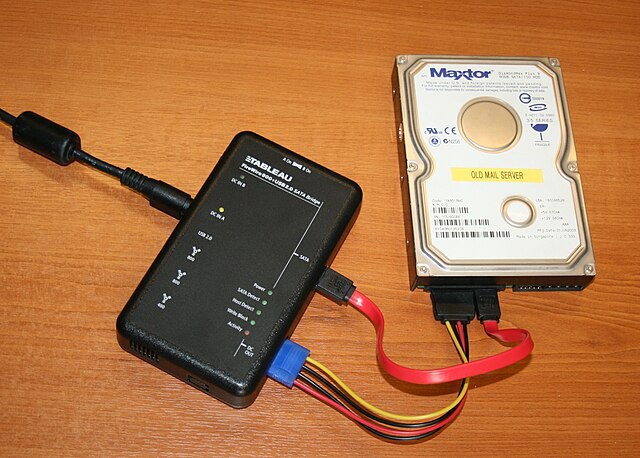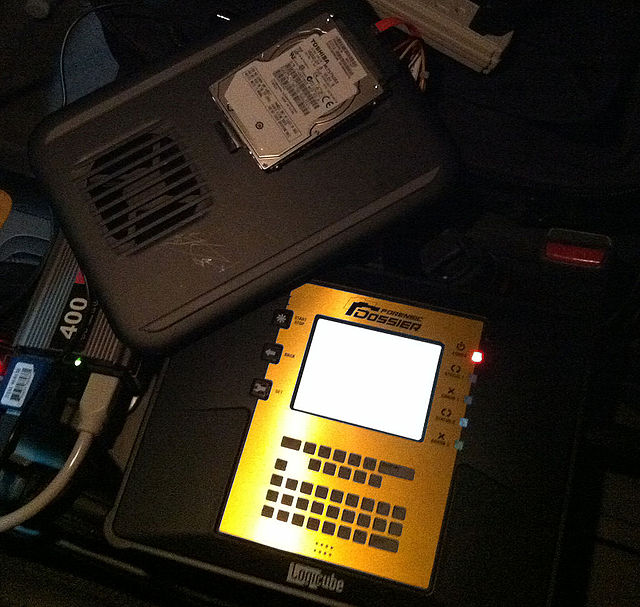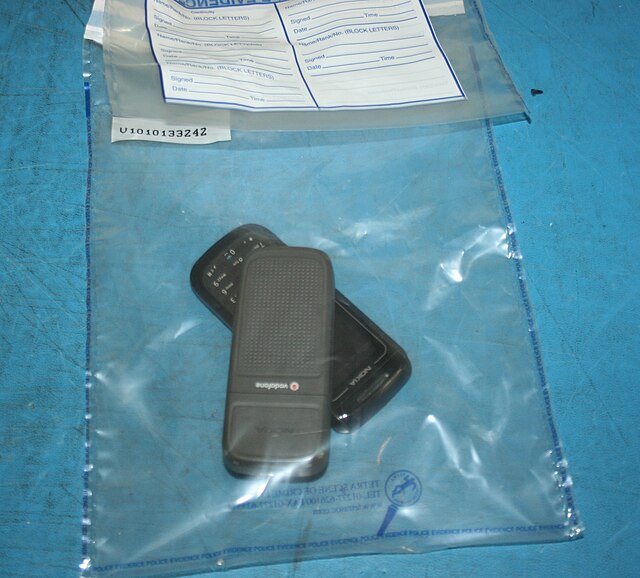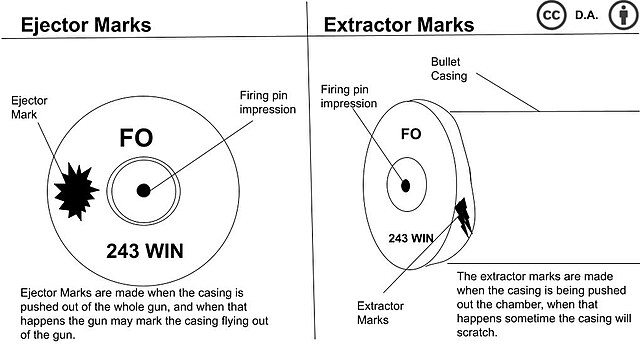Digital forensics is a branch of forensic science encompassing the recovery, investigation, examination, and analysis of material found in digital devices, often in relation to mobile devices and computer crime. The term "digital forensics" was originally used as a synonym for computer forensics but has expanded to cover investigation of all devices capable of storing digital data. With roots in the personal computing revolution of the late 1970s and early 1980s, the discipline evolved in a haphazard manner during the 1990s, and it was not until the early 21st century that national policies emerged.
A portable Tableau write-blocker attached to a hard drive
Digital evidence can come in a number of forms
Private Investigator & Certified Digital Forensics Examiner imaging a hard drive in the field for forensic examination.
Mobile phones in a UK Evidence bag
Forensic science, also known as criminalistics, is the application of science principles and methods to support legal decision-making in matters of criminal and civil law.
Ambroise Paré's surgical work laid the groundwork for the development of forensic techniques in the following centuries.
This is an example and explanation of extractor/ejector marks on casings.
Apparatus for the arsenic test, devised by James Marsh
Fingerprints taken by William Herschel 1859/60








